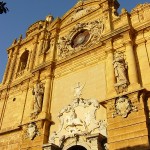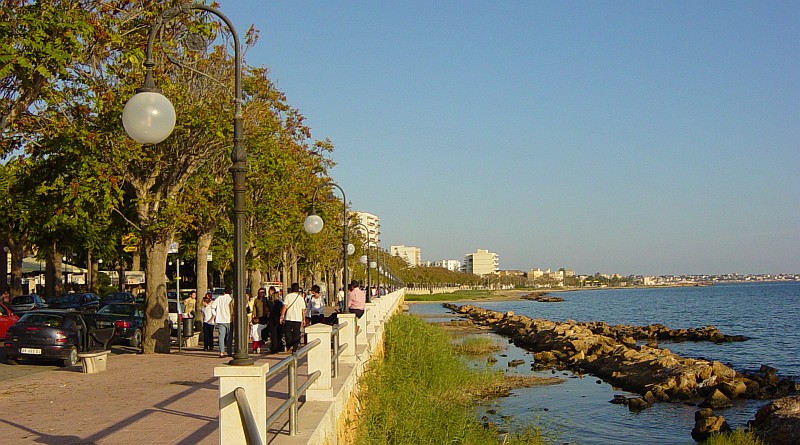Mazara: the cathedral and the waterfront
The river mouth Mazaro is an excellent natural shelter used by humans since ancient times. The first to exploit it were the Phoenicians, who made a point of reference for their maritime trade in the Mediterranean.
Around the 600 a. C. supervened the Greeks of Selinunte, which transformed the harbor in full “Emporium ” business guests there also the military fleet of their city-states, and when in 409 a.C. The Carthaginians decided to attack Selinus destroying, Mazara became a bridgehead with Africa.
Under the Romans, the port continues its functions, Emperor Antonio Pio (first century A.D.) mentions him among the leading ports of the African sea. In 1930 carrying out excavations at the mouth of the harbor, were discovered two piers sunk believed to date back to Roman times right.
The harbor experienced a period of great splendor with the arrival of the Arabs in 827 that landed at Mazara, placing the city at the head of one of the three administrative districts into which they divided Sicily.
 After the Muslims, Mazara remained the major port between the island and pilot books all the time talking about it. Table of Pisa 1150, in third place after Palermo and Messina is quoted on the port of Mazara.
After the Muslims, Mazara remained the major port between the island and pilot books all the time talking about it. Table of Pisa 1150, in third place after Palermo and Messina is quoted on the port of Mazara.
In medieval Pisan merchants hosted Mazara, Genoese, Venetians and Catalans, who traded with Africa and Spain exporting cotton, and importing grain leather and spice, silks and cloths. From 1400 the port underwent a period of decline, is lifted from the early 1800, years in which the first wine trade by sea developed.
Then gradually began to develop the fishing fleet, Today is the first in Italy, with over 4330 unity between large and small.
Up to 1920 the case of small fishing boats sailing, then gradually passed to the engine right up to the modern offshore vessels iron today who go to cast their nets Financo in distant seas of West Africa.
Today the port, important than the fishing fleet, home to commercial traffic on the rise and it took off for a final awaits further development of tourism-based business in the distinction of being the closest Italian point of departure to the African continent.
THE FACTORY OF TEMPLES: THE CAVE OF CUSA
Moving away from Selinunte with memories still sharp of majestic temples, Just walk a short stretch of road to Castelvetrano to see and understand how they were built.
Near Campobello di Mazara, The Cave of Cusa, the most suggestive natural factory of construction materials of ancient Greek, are spectacularly remote. In an area with more uneven, bitter and green, we encounter suddenly in a cylindrical drum of the column already cut and ready to be transported to the temple.
It seems to be catapulted back into the fatal moment, when the work of preparation and transportation of the drums was abruptly interrupted by the Selinuntini, perhaps for the arrival of the Carthaginian troops that they would destroy the city.
Emerges from the ground limestone tufa; on the rock are clearly visible deep cuts; distance between their, other columns were of gigantic drums in various stages of processing, engravings from the first round finished up with drums, who waited in vain only to be detached from the bottom of the bench to become limestone temples.
THE Satyr
The Satyr was born between the late spring of 1997 and the 4 March 1998.
The statue was found in two days. First the left leg in the spring of 1997; followed almost a year after the dead body of the other leg and arm. The news soon passed over the narrow limits of the scientific, immediately becoming the object of attention to major national newspapers and intentional. At the head of the Satyr, rushed even the highest offices of State and the Region in the field of cultural heritage. The nobility of “character” and its discovery could not merit less understanding as we went with the passage of time.
For the Satyr was chosen immediately “l'ospedale” Best of Italy in order to ease the pain of time and the sea that had heavily affected the nature and texture. He landed in the capital and was entrusted to the loving care of excellent technicians of the Central Institute of Restoration, which, in turn, entrusted it to other, specialists to integrate their knowledge with those arising from other types of specialized investigations. At present it is likely to assume that the statue was part of the cargo of a wrecked ship between Sicily and Cape Bon, a period of maximum diffusion in ancient antiquities trade. Hardly such an object could belong to a boat that transported the bronze scrap to be remelted. He was treated, therefore, to other property or looted as a function of a thriving trade in works of art for the flourishing markets of the Roman Sicily or the Peninsula.
At the time it was recovered there was talk of a figure of Aeolus, by dell'impetuoso motion and pointed ears that we know in the personification of the Winds. The status of “Satyr in estasi” arose from the comparison with the countless reproductions of antique gems and reliefs that complete the gesture and attributes. Ever since ancient Athenian pottery illustrates the Bacchantes engaged in circular dance, Similar figures are embossed around the 400 of a crater of sheet bronze, where the women shake their hair vibrant.



